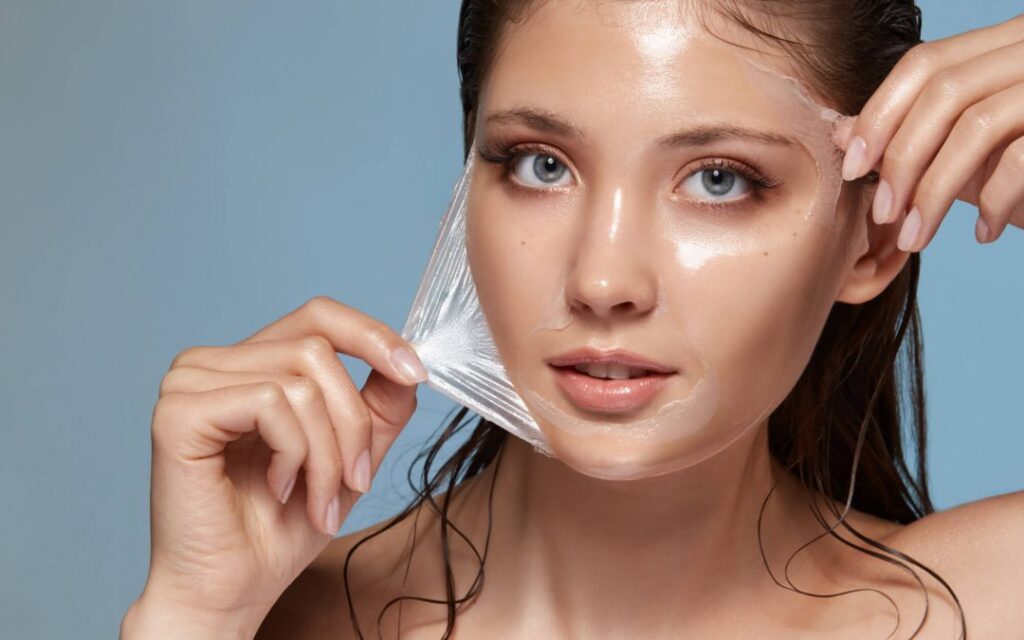Introduction
Aging is a natural process that everyone goes through, and its effects become more apparent on our skin as we get older. Over the years, the beauty industry has introduced numerous products and treatments to help combat the signs of aging. One such treatment that has gained popularity is chemical peels. Chemical peels offer a powerful way to rejuvenate the skin, but when is the right time to start using them? In this article, we will explore the relationship between Chemical Peels in Abu Dhabi and age to help you determine when you should consider incorporating them into your skincare routine.

Understanding Chemical Peels
Before diving into the age-related considerations, it’s essential to understand what chemical peels are and how they work. Chemical peels are dermatological treatments that use various chemical solutions to exfoliate the skin’s top layer. This process helps remove damaged and dead skin cells, revealing smoother, younger-looking skin beneath.
Chemical peels are highly versatile and can be customized to address various skincare concerns, including:
- Acne and acne scars
- Sun damage and pigmentation issues
- Fine lines and wrinkles
- Uneven skin texture and tone
- Enlarged pores
- Melasma and hyperpigmentation
The depth of the peel and the specific chemicals used can be adjusted to target these issues effectively. Chemical peels are typically categorized into three levels: superficial, medium-depth, and deep peels. The choice of peel depth depends on the severity of the skin concerns and the individual’s skin type.
When to Start Using Chemical Peels
The decision to start using chemical peels depends on various factors, including your age, skin type, and specific skin concerns. Here are some age-related considerations to help you determine when to incorporate chemical peels into your skincare regimen:
- Early 20s to 30s: Prevention and MaintenanceIn your early 20s and 30s, your skin is still relatively youthful and resilient. This is an excellent time to focus on preventive skincare and maintenance. While you may not have significant signs of aging yet, chemical peels can help maintain your skin’s youthful appearance by addressing minor concerns such as early sun damage, mild acne, and uneven texture.Superficial chemical peels, like glycolic or salicylic acid peels, can be used at this stage to enhance skin clarity and promote a radiant complexion. These lighter peels require minimal downtime, making them suitable for a busy lifestyle.
- Late 30s to 40s: Addressing Early Signs of AgingAs you approach your late 30s and 40s, you may begin to notice the first signs of aging, such as fine lines, wrinkles, and subtle pigmentation issues. This is an ideal time to consider medium-depth chemical peels, such as TCA (trichloroacetic acid) peels, which can provide more significant results.Medium-depth peels help stimulate collagen production and improve skin elasticity, making them effective for reducing the appearance of fine lines and wrinkles. They can also target sunspots and other pigmentation concerns that become more apparent with age.
- 50s and Beyond: Rejuvenation and RestorationIn your 50s and beyond, the skin’s natural aging process accelerates, and you may experience more pronounced signs of aging, including deep wrinkles and sagging skin. Deep chemical peels, like phenol peels, can be considered for skin rejuvenation and restoration.Deep peels can dramatically improve the appearance of aged skin by addressing deep wrinkles, severe sun damage, and sagging. However, they require more downtime and may involve a longer recovery period.
Choosing the Right Chemical Peel
The decision to start using chemical peels should also consider your specific skin type and concerns. It’s crucial to consult with a dermatologist or skincare professional who can assess your skin and recommend the most suitable type and depth of chemical peel for your needs.
Here are some general guidelines for selecting the right chemical peel based on your age and skin concerns:
- For younger individuals (20s to 30s): Superficial peels like glycolic or salicylic acid can help maintain a youthful appearance.
- For early signs of aging (late 30s to 40s): Consider medium-depth peels like TCA to target fine lines and mild pigmentation.
- For advanced signs of aging (50s and beyond): Consult a professional for deep peels like phenol to rejuvenate and restore aged skin.
The Importance of Sun Protection
Regardless of your age and the type of chemical peel you choose, sun protection is a non-negotiable aspect of maintaining healthy and youthful-looking skin. Exposure to UV rays can accelerate skin aging and counteract the benefits of chemical peels. Always wear sunscreen with broad-spectrum SPF, even on cloudy days, and reapply as needed to shield your skin from UV damage.
Conclusion
Chemical peels can be a valuable addition to your skincare routine at various stages of life, depending on your individual needs and concerns. While there is no one-size-fits-all answer to when you should start using chemical peels, understanding the relationship between chemical peels and age can help you make an informed decision. Consulting with a dermatologist or skincare professional is essential to ensure that you receive personalized recommendations and achieve the best results for your skin. Ultimately, a combination of professional advice, the right chemical peel, and diligent sun protection can help you maintain healthy and youthful skin throughout the years.




